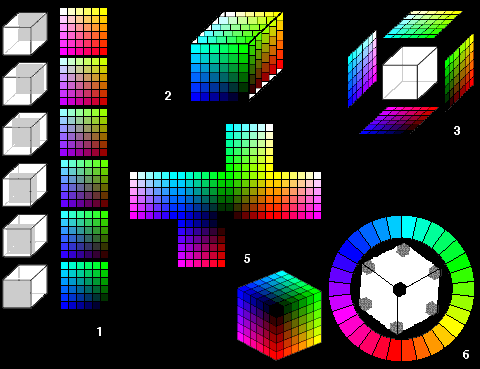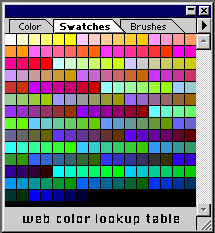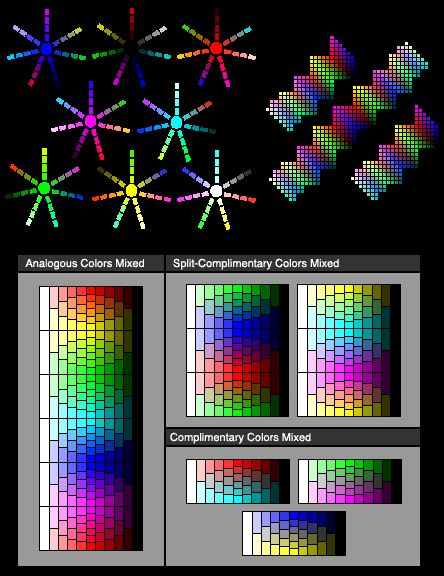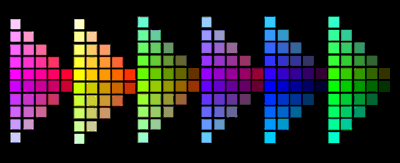


RGB Color Cube Hands-on Visualization Process
We have moved! For updated information go to
ww.digitalcoloratlas.com
By working with this series of activities, students familiarize themselves
with the perceptual structure of the RGB Color Cube. Based
on the Web Color Look Up Table (CLUT) students generate color palettes
based on perceptual structures of the RGB color cube and propose new ways
to visually organize computer based colors.

|
RGB
Cube Visualization Animation by P. Bendito. |
Activity
1: Six plates based on the CLUT
Based
on the Macintosh Web Color Lookup Table (CLUT), reconstruct six predetermined
possible arrangements of the CLUT.
Activity 2: "Slide-tray"
view of the RGB Cube
Based on previous six possible arrangements of the CLUT, construct a slide
tray view of the RGB Color Cube.
Activity 3: Four predetermined
side-views of the RGB Cube
Based on the slide tray view of the RGB Color Cube, create 4 predetermined
side-views of the RGB Color Cube and an illustration of its exterior (3D
representation).
Activity
4: Problem-solving Activity 1
Construct at least two color palettes based on the geometric structures
of the RGB Color Cube.
Activity
5: Planar View of the RGB Cube
Based on geometry principles, propose and produce a possible planar view
of the RGB color Cube.
Activity
6: Construction of an additive color wheel
Based on the RGB Color Cube, create an additive color wheel.
Activity 7: Visual Analysis of the RGB Cube: Questionnaire!
This activity is based on several sub-activities that will guide you through
the perceptual structure of the RGB cube and its association with standard
color schemes.

Activity
8 - Problem-Solving Activity 2
Color Palette Generation: This activity asks students to propose new ways
to visually organize the colors of the web color lookup table. Below are
examples of color palettes created by students:

.....
< home >